Are you looking for a contractor?
Submit our quick form and get quotes now!
Table of Contents
6 min read
Everything About Transforming Your Patio into a Sunroom
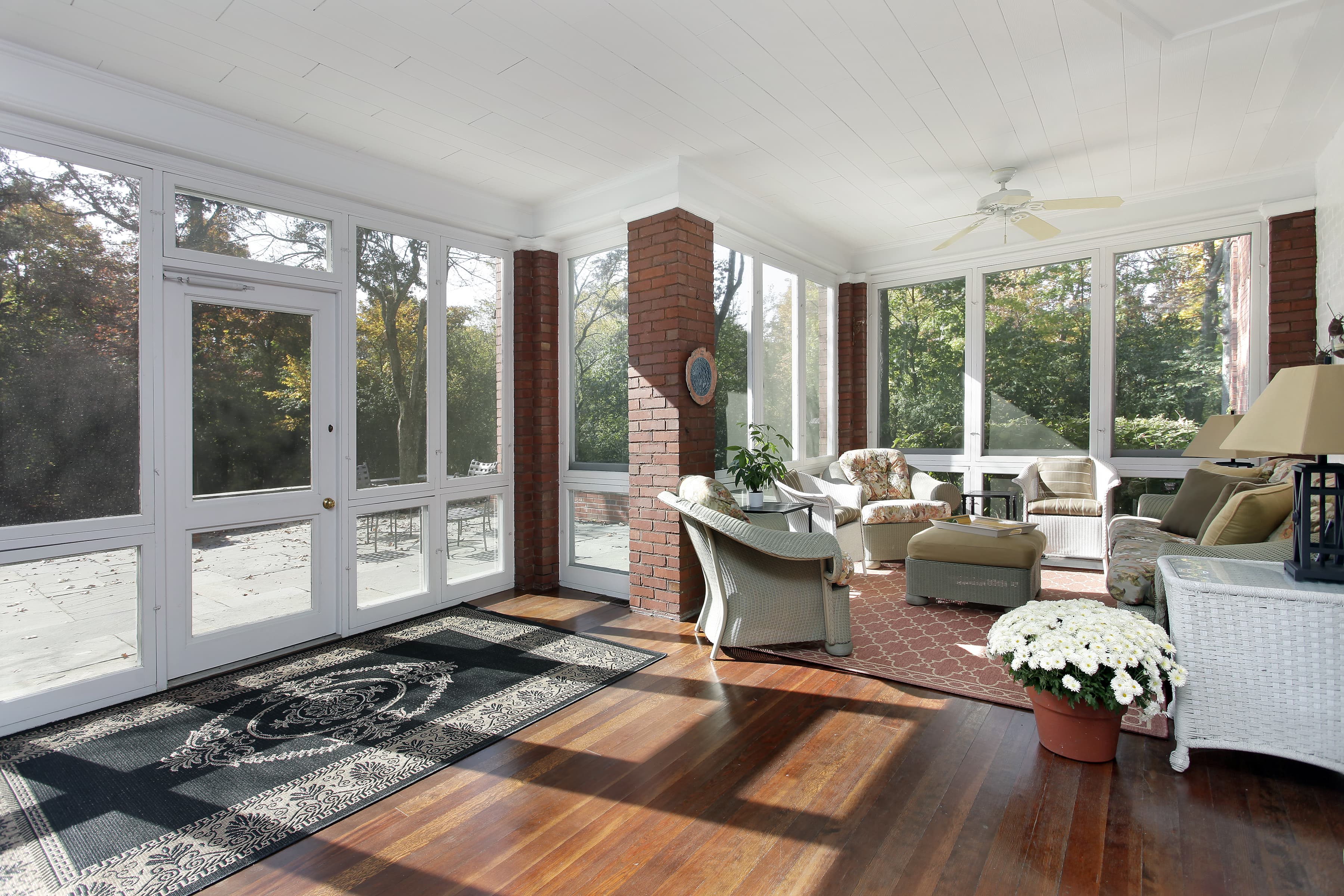

6 min read
Everything About Transforming Your Patio into a Sunroom
Exterior renovationsEverything About Transforming Your Patio into a Sunroom
Turning your outdoor space into a sunroom means benefiting from the surrounding landscape without dealing with weather-related downsides. Whether the wind is blowing, rain is falling, or storms are veering their ugly heads, why deprive yourself of a beautiful view? To reap the benefits of your sunroom at will, you first have to choose wisely when it comes to the different options made available to you.
Turn Your Patio into a Temperature-Controlled Sunroom
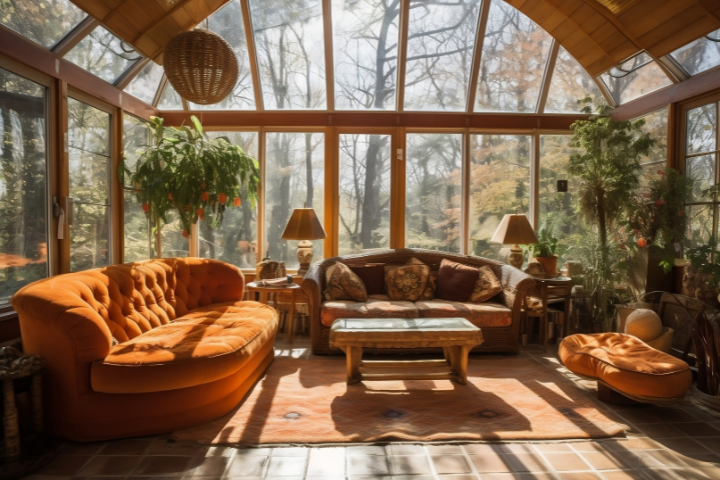
Source: Canva
If you’re considering using your sunroom throughout the summer, note that a north-facing space is preferable. In fact, a sunroom facing said direction will benefit fully from its position, creating an enjoyable coolness within its confounds, bypassing the overwhelming heat outside.
As for the type of glazing to prioritize, reflective glass is best. The latter doesn’t retain the heat inside the sunroom, therefore it won’t intensify. In keeping with the idea of maintaining a cool sunroom, opt for single-glazing (5- to 6-inch thick glass panes) with limited insulation properties. Also, consider installing window shades to create a sun-shaded zone. Along the same lines, consider buying a specifically designed ceiling shade.
Looking to buy blinds?
We recommend Quebec-based company StoresBoutique.ca: custom-made blinds, sought-after products, but above all else, the best warranties for a stress-free purchase.
Wide Array of Heatless 3-Season Sunrooms
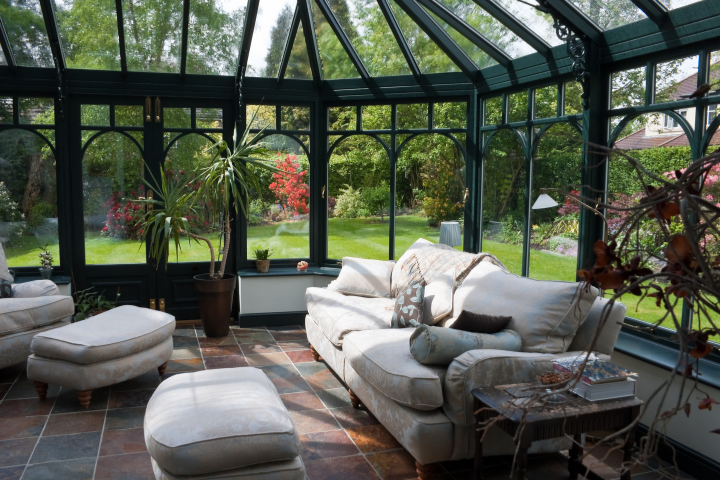
Source: Canva
There are three available options in terms of heatless sunrooms.
Firstly, we should mention that glass-framed sunrooms are an especially sought-after option. In terms of characteristics, this type of sunroom is similar to a heated model, aside from its lower energy efficiency. Note that this type of sunroom retails for roughly $10,000 to $30,000.
Secondly, a polymer sunroom has an aluminum frame. Its glazing is clear or tinted, is especially resilient, and has a 10-year or so lifespan. However, maintenance-wise, it does require more upkeep if you want to steer clear of dirt-stained windows. This type of sunroom is half the price of its glass counterpart. Therefore, you can purchase a veranda-like sunroom for about $6,000 to $15,000.
Lastly, purchasing a veranda-like sunroom is a worthwhile choice for those looking to blend in their new purchase with their home’s architecture as much as possible. This type of sunroom is designed with several windows, allowing you to benefit from a crisp, gentle breeze while easily airing out the inside of your enclosure. To benefit from a veranda-like sunroom, note that you’ll need to spend between $7,000 and $25,000.
If you deem yourself quite handy, go ahead and install your new solarium yourself. Bear in mind that it must lie on a sturdy wooden deck, upheld by piles or forming tubes inside which concrete is poured.
What is the difference between a sunroom and a veranda?
According to the APCHQ (Quebec’s Association of Construction and Housing Professionals), the main difference between a sunroom and a veranda lies in their construction and usage. A sunroom (or solarium) is typically heated, insulated, and used year-round, which subjects it to the rules and standards outlined by the Building Code since it’s considered an integral part of a house.
On the other hand, a veranda is typically not heated nor insulated, and it’s not used year-round, which positions it outside the Building Code requirements established for house-related structures. As such, a sunroom is an additional living space, while a veranda could be described as an indoor-to-outdoor, seasonal transition space.
To learn more about how these two structures differ, check out our article What Best Suits Your Project: A Sunroom or Veranda?
Transform Your Patio into a Heated, Winter-Ready Sunroom
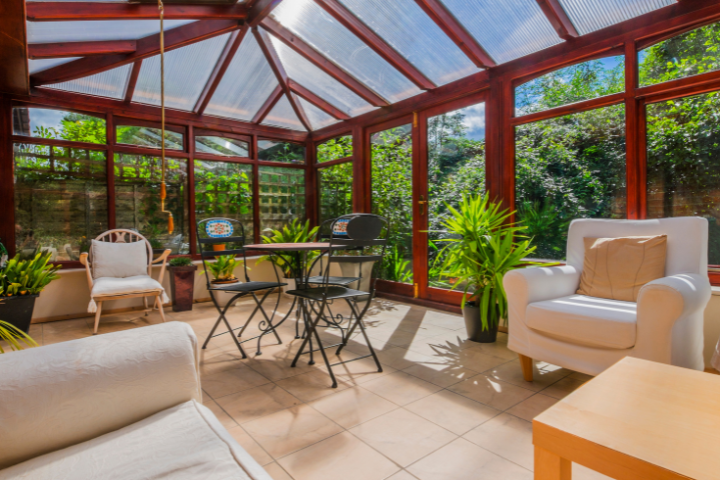
Source: Canva
If you’re planning on using your sunroom mainly during wintertime, a north-facing positioning is best. In fact, doing so will trap the heat generated via the sun’s rays inside the enclosure. The thermal disparity found between the sunroom’s walls and its interior setting will allow for an even heat flow.
The enclosure should preferably be small in size since it requires the use of artificial heating on top of the natural heat stemming from the sun’s rays.
To get the most out of heat storage during the colder seasons, select energy-efficient insulated glazing. Double-glazing is a must since you have to boost heat retention as much as possible.
Flooring choices are also of utmost importance, as some types of floor materials are especially cold to the touch, thus not the most judicious of choices for those looking to benefit from a warm and cozy nook. Therefore, ceramic tiles and stone shouldn’t be at the top of your list of preferred flooring.
Should you not be able to go without the sheer beauty and aesthetic appeal of the above-mentioned flooring materials and want to install either one in your sunroom, then it’s best to artificially heat the floor. Note that doing so will cost roughly $300 to $400 per square foot and is a significant financial investment.
No matter your flooring of choice, it's recommended to inject a spray polyurethane foam (at least 5 inches thick) to fill the void found under the flooring. This supplementary and highly efficient protection acts as an air and vapour barrier, limiting gaps that are likely to allow cold air to filter through your floor and into your sunroom. Implementing this measure means complying with the requirements established by the Régie du bâtiment du Québec for outdoor flooring insulation.
Transforming Your Deck into a Sunroom Guidelines
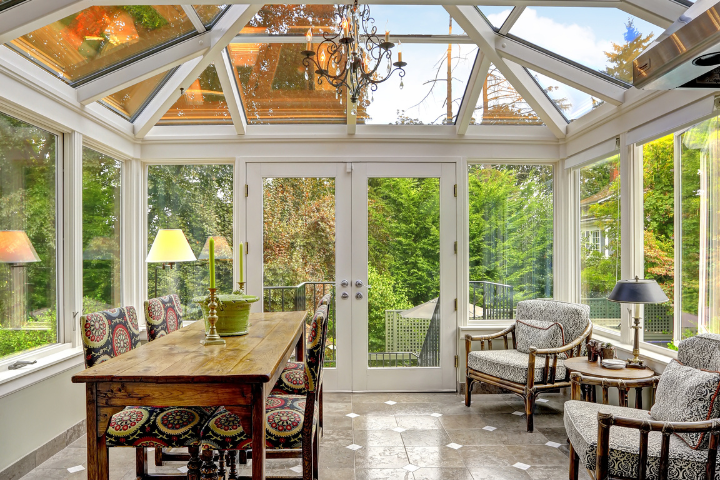
Source: Canva
Resilient Glazing
No matter your motivation behind wanting to turn your deck into a sunroom, note that choosing tempered glass is a must. This type of glazing was treated to render it two to five times more resistant to thermal shocks compared to standard glazing, making it the obvious choice when building a sunroom.
A Low-E Film for Optimal Energy Efficiency
Also noteworthy, applying a low-e film over your windows. This film is made of a thin layer of metallic oxide that's applied to your windows' surfaces, allowing heat to reflect inside during the winter and outside during the summer. Therefore, no matter the season during which you plan on enjoying your sunroom, you’ll definitely reap its benefits.
Transforming a Deck into a Sunroom… Costs Matter
There’s no surprise here, but opting for a year-round sunroom requires a hefty sum compared to a heatless sunroom. The reasons behind this price discrepancy are due to insulating the entire structure to get it ready to face harsh winters as well as building a foundation.
Moreover, you have to hire a professional to install it, which is also a factor to account for in your budget when purchasing your sunroom. That’s why people usually spend around $30,000 for a heated sunroom, an amount that widely differs from the costs mentioned above regarding heatless sunrooms.
How to Properly Set Up a Sunroom
To minimize the risk of unwelcomed surprises post-sunroom construction, request information from your local authorities to gain insight regarding local regulations pertaining to this type of construction. The established measures may very well vary based on your area of residence. Also, bear in mind that you have to comply with the mandatory measures imposed by the Régie du bâtiment du Québec (or your local construction regulatory authority) regarding your sunroom building project.
Last modified 2024-02-02
Looking for something else?
Related articles
The latest industry news, interviews, technologies, and resources.

Amanda Harvey • 07 Nov 2023
Undergoing any form of home renovation is a huge venture that requires time, energy and patience. Of course, you can’t just grab a hammer and some nails and begin your renovation tomorrow, as plenty of preparation and planning must be fulfilled. If you are renovating a home in the city of Toronto, there are numerous regulations and bylaws that must be considered before performing any type of structural changes or otherwise.

N/A • 07 Nov 2023
Your lawn and garden say a lot about you! Aside from leaving the first impression on visitors and those passing by, your landscaping enhances your home’s appearance and makes you proud of the place you call your own. With the right planning, careful maintenance and upkeep, you can have a near-perfect lawn.

Amanda Harvey • 07 Nov 2023
Without a roof on your home, it would be like living outdoors. Your home's roof is essential for keeping your family, as well as your furniture, dry, cozy and warm. If there is a leak, a crack or a break detected, it is important to repair it as soon as possible so as to avoid further damage to the material underneath as well as to other parts of your home.
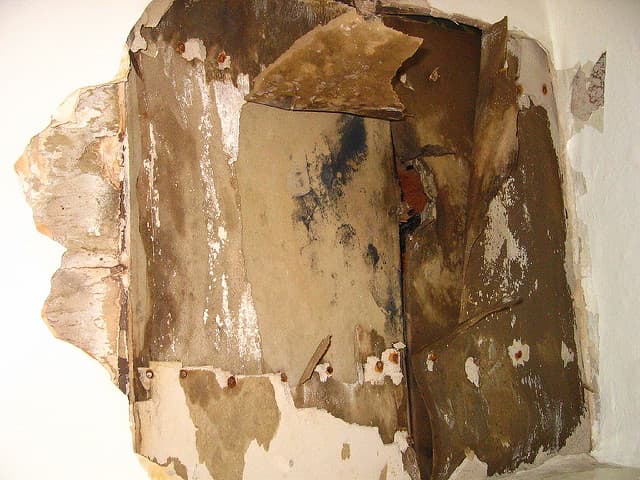
RenoQuotes.com • 07 Nov 2023
Organic materials such as wood, drywall boards, and dust combined with water or moisture for more than 48 hours become favourable environments for mould growth.
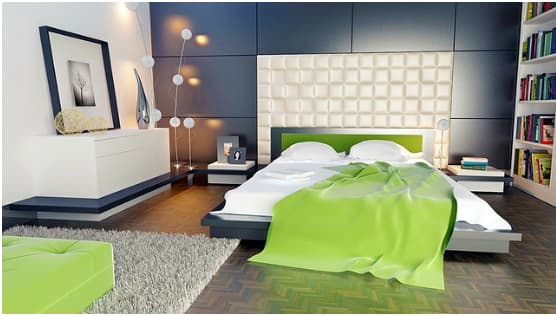
N/A • 07 Nov 2023
Wall panels are a wonderful feature for the home, and they come in a variety of materials, shapes, styles and colours. Therefore, they can be used alongside almost any home decor, made to suit the needs of any homeowner. Panelling can cover an entire wall, or just half if you so choose. Installing wall panelling is a DIY project that can be easily accomplished with the right steps and the options are endless!